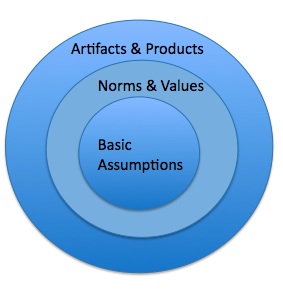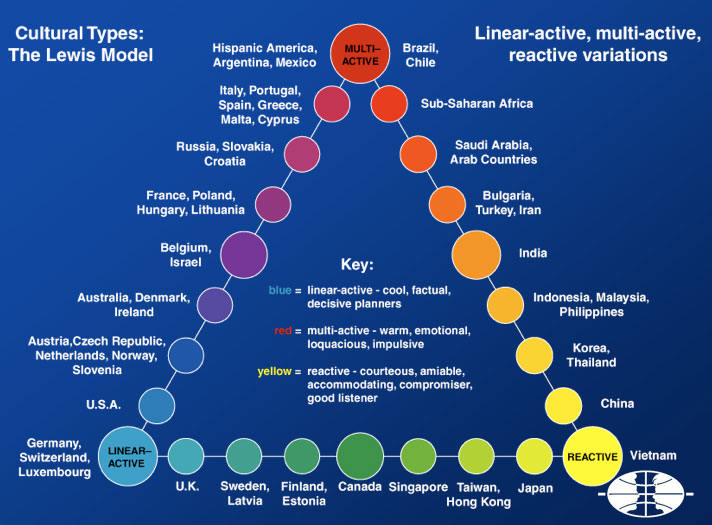 Looking again at the Lewis Model of Cultural types[1] or at any other definition and model of culture, I cannot help asking myself, into which category I would actually fall. This is quite a funny question as I grew up in Belgium, went to a European School, have German parents, lived in different countries and continents and now call Switzerland my home. Can I consider myself more as a Belgian because my roots are there (and not only because I like strong beer), or should it be more as a German as I like things to be organised and clear, or could it even be European, although there is no such category… for most of the people I know, things are clear: when football (soccer) championships are on, they know exactly which team or which country to support; when the Olympics or Paralympics are on TV, it is very clear who has to bring home most medals. For me, nothing is clear. As long as I can think, this has always caused some confusion; for example as a student when watching the Eurovision contest with other nationalities. Whereas everybody was eager to see their own country win, I was rather clueless and decided instead to morally ‘support’ the musicians who seemed to have the best chances to win.
Looking again at the Lewis Model of Cultural types[1] or at any other definition and model of culture, I cannot help asking myself, into which category I would actually fall. This is quite a funny question as I grew up in Belgium, went to a European School, have German parents, lived in different countries and continents and now call Switzerland my home. Can I consider myself more as a Belgian because my roots are there (and not only because I like strong beer), or should it be more as a German as I like things to be organised and clear, or could it even be European, although there is no such category… for most of the people I know, things are clear: when football (soccer) championships are on, they know exactly which team or which country to support; when the Olympics or Paralympics are on TV, it is very clear who has to bring home most medals. For me, nothing is clear. As long as I can think, this has always caused some confusion; for example as a student when watching the Eurovision contest with other nationalities. Whereas everybody was eager to see their own country win, I was rather clueless and decided instead to morally ‘support’ the musicians who seemed to have the best chances to win.
For some people this situation might seem rather strange, for some others quite common, always depending on their own background. For me, it has the effect of feeling like a chameleon, ‘changing colour’ whenever necessary and fitting into any environment. But: is there something like a European Culture as opposed to a North-American or any other culture? Searching on the Internet as well as on different pages from the European Commission and the UN, although “European Culture” is mentioned very often, nobody really seems to know what it actually means and views differ.[2] This is indeed very interesting because our world becomes more and more global, people also become more and more mobile and study/work abroad but at the same time roots are more important than ever and the country of origin (in many cases the nationality) is the place where a deep feeling of belonging is connected to.
Whereas ‘belonging to Europe’ or more precisely ‘Western Europe’ is not really something precise and does not help me with identifying into which “type of culture” category I fall into, one thing is for sure: whatever it is that I come with, gives me access to the three dimensions of intercultural competence – affective, cognitive and communicative behavioural – as discussed in my last blog entry.[3] It is true that by growing up with a multitude of languages and people of different nationalities, I see my capacity of being emphatic, free of prejudice and stereotypes, understanding intercultural communication processes and building up social competencies enhanced. Well, being a mindful leader working in a multicultural environment, this is actually of outmost importance for what I do and what I believe in. And, who knows: maybe some high ranking official will ‘invent’ a European Passport one day… I am ready! And until that day arrives: I actually like being a chameleon.
[1] See the Lewis Model: http://www.crossculture.com/services/cross-culture/ for example
[2] Compare for example the Special Eurobarometer 278: European Cultural Values, page 63 onwards.
[3] See “Mindful leadership in a multicultural environment – Part III”




